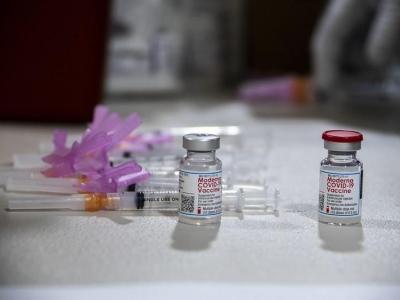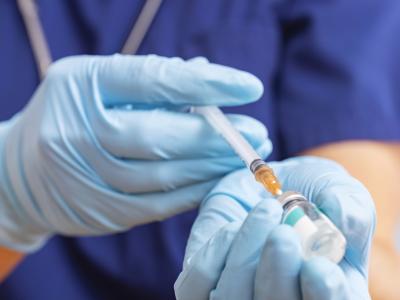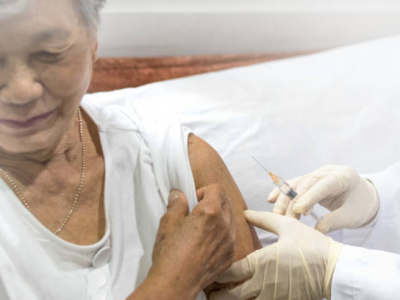Study finds high antibiotic use in US hospitals
A retrospective study of inpatients treated at 576 US hospitals in 2016 and 2017 found that nearly two-thirds received antibiotics, and that broad-spectrum antibiotic use was common, US researchers reported in Clinical Infectious Diseases.
To measure antibiotic use at the hospitals, researchers from the University of Maryland School of Medicine and other US institutions obtained daily antibiotic charge data for each adult inpatient encounter, along with patient clinical data, facility data, and ICD-10 diagnosis codes. Each antibiotic was mapped to one of 18 mutually exclusive antibiotic classes and to spectrum of activity categories. Antibiotic usage rates were reported as total inpatient days of therapy of therapy (DOT) per 1,000 patient-days, and relationships between DOTs and hospital, case-mix, and geographic variables were evaluated in negative binomial regression models.
The study included 11,701,326 across 576 hospitals during the study period. Overall, patients received antibiotics in 65% of hospitalizations, at a crude rate of 870 DOTs per 1,000 patient-days. By class, use was highest among beta-lactam/beta-lactamase inhibitor combinations (206 DOTs/1,000 patient-days), third- and fourth-generation cephalosporins (128 DOTs/1,000 patient-days), and glycopeptides (113 DOTs/1,000 patient-days). By spectrum of activity, agents with anti-pseudomonal activity had the highest usage (245 DOTs/1,000 patient-days).
Teaching hospitals averaged lower rates of total antibiotic use than non-teaching hospitals (834 versus 957 DOTs/1,000 patient-days; P < 0.001). In adjusted models, teaching hospitals remained associated with lower use of third- and fourth-generation cephalosporins and anti-pseudomonal agents (adjusted incident rate ratios, 0.92 [0.86 to 0.97] and 0.91 [0.85 to 0.98], respectively). Significant regional differences in total and class-specific antibiotic use also persisted in adjusted models. Compared to the South Atlantic, rates of total antibiotic use were 6%, 15%, and 18% lower on average in the Pacific, New England, and the Middle Atlantic, respectively.
The authors of the study say that, given the recent focus on antibiotic stewardship, they're surprised by the antibiotic usage rate, which is similar and in some cases higher than estimates from 5 to 8 years prior. They say that could be because reductions in some antibiotics are being offset by increases in other agents. They also say it's possible that while antibiotic stewardship programs are reducing antibiotic use in hospitals, their uptake remains too limited to drive national reductions.
May 18 Clin Infect Dis abstract
Communication training tied to reduced prescribing in German physicians
A short communication trainings session for primary care physicians was associated with an 11% drop in antibiotic prescribing, German and Austrian researchers reported yesterday in PLoS One.
The study included a total of 1,554 German primary care physicians who received two 2-hour communication training sessions in February and March of 2016. The training was based on MAAS-Global, an instrument used in the Netherlands to measure physicians' communication skills (the German version is called MAAS-Global-D). The researchers compared antibiotic prescribing among these physicians (the intervention group) with a control group formed from observational data.
To estimate intervention effects, the researchers applied a combination of difference-in-difference (DiD) and statistical matching based on entropy balancing. They estimated a corresponding multi-level logistic regression model for the antibiotic prescribing decisions of German primary care physicians for upper respiratory tract infections (URTIs).
The reduction in the overall prescribing rate of the intervention group between the pre-intervention and post-intervention period was 11.2%. The difference between both groups in the difference between the periods was -6.5% and statistically significant. The estimated effects were nearly identical to the effects estimated for the multi-level logistic regression model with applied matching. Furthermore, for the treatment of young women, the impact of the training on the reduction of antibiotic prescription was significantly stronger.
The authors conclude, "Our results suggest that communication skills implemented via MAAS-Global-D training lead to more prudent prescribing of antibiotics for URTIs. Therefore, the MAAS-Global-D training could not only avoid unnecessary side effects but could also help to reduce the emergence of drug resistant bacteria."
May 19 PLoS One study















